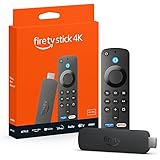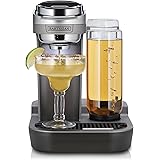Fullstar Vegetable Chopper - Food Chopper - Onion Chopper - Vegetable Slicer & Spiralizer - Veggie Chopper with Container - Kitchen Gadgets - Home Essentials - Kitchen Accessories (All in 1, White)
$22.99 (as of November 26, 2024 21:36 GMT +00:00 - More infoProduct prices and availability are accurate as of the date/time indicated and are subject to change. Any price and availability information displayed on [relevant Amazon Site(s), as applicable] at the time of purchase will apply to the purchase of this product.)Chom Chom Roller Pet Hair Remover and Reusable Lint Roller - Black ChomChom Cat and Dog Hair Remover for Furniture, Couch, Carpet, Clothing and Bedding - Portable, Multi-Surface Fur Removal Tool
$19.59 (as of November 26, 2024 21:36 GMT +00:00 - More infoProduct prices and availability are accurate as of the date/time indicated and are subject to change. Any price and availability information displayed on [relevant Amazon Site(s), as applicable] at the time of purchase will apply to the purchase of this product.)ThermoPro TP19H Digital Meat Thermometer for Cooking with Ambidextrous Backlit and Motion Sensing Kitchen Cooking Food Thermometer for BBQ Grill Smoker Oil Fry Candy Instant Read Thermometer
$14.99 (as of November 26, 2024 21:36 GMT +00:00 - More infoProduct prices and availability are accurate as of the date/time indicated and are subject to change. Any price and availability information displayed on [relevant Amazon Site(s), as applicable] at the time of purchase will apply to the purchase of this product.)Amazon Fire TV Stick 4K (newest model) with AI-powered Fire TV Search, Wi-Fi 6, stream over 1.5 million movies and shows, free & live TV
$21.99 (as of November 26, 2024 21:36 GMT +00:00 - More infoProduct prices and availability are accurate as of the date/time indicated and are subject to change. Any price and availability information displayed on [relevant Amazon Site(s), as applicable] at the time of purchase will apply to the purchase of this product.)How To Draw Everything: 300 Drawings of Cute Stuff, Animals, Food, Gifts, and other Amazing Things | Book For Kids
$10.90 (as of November 26, 2024 21:36 GMT +00:00 - More infoProduct prices and availability are accurate as of the date/time indicated and are subject to change. Any price and availability information displayed on [relevant Amazon Site(s), as applicable] at the time of purchase will apply to the purchase of this product.)The CamelBak hydration pack has been a staple in the outdoor and fitness communities for decades. Known for their innovative designs, high-quality materials, and reliable performance, CamelBak offers a wide range of hydration packs to suit various needs and preferences. In this article, we’ll delve into the features, benefits, and technical specifications of the CamelBak hydration pack, as well as its pros and cons.
Design and Features
The CamelBak hydration pack is designed with comfort, convenience, and functionality in mind. The pack’s sleek design allows for a comfortable fit around the torso, while the ventilated back panel helps to prevent overheating during long periods of activity.
One of the standout features of the CamelBak hydration pack is its Crux reservoir system. This patented technology provides fast and reliable water flow, ensuring that you stay hydrated even in high-intensity activities. The reservoir itself is made from BPA-free material and has a capacity of 1.5 liters (51 oz).
The pack also comes equipped with a number of clever features, including:
- Quick-release hose for easy refueling
- Magnetic tube trap to keep the hose secure
- Reflective trim for increased visibility in low-light conditions
- Multiple pockets for storing snacks, keys, and other essentials
Technical Specifications
- Capacity: 1.5 liters (51 oz)
- Reservoir material: BPA-free
- Crux reservoir system
- Quick-release hose
- Magnetic tube trap
- Reflective trim
- Multiple pockets
- Weight: approximately 10 oz (280g)
Pros and Cons
Pros:
- Fast and reliable water flow with the Crux reservoir system
- Comfortable design with ventilated back panel
- Multiple pockets for storing snacks, keys, and other essentials
- Quick-release hose for easy refueling
- Reflective trim for increased visibility in low-light conditions
Cons:
- Some users find the pack’s size to be too large or bulky
- The magnetic tube trap can be finicky and may require adjustment
- Limited capacity compared to larger hydration packs
Comparison to Competitors
The CamelBak hydration pack is a strong contender in the market, but it faces stiff competition from other brands such as Osprey, Deuter, and Salomon. Here’s a brief comparison:
- Osprey Hydraulics: Similar design and features to the CamelBak, with a slightly larger capacity (2L).
- Deuter Speed Lite: A lightweight and compact hydration pack with a smaller capacity (1L).
- Salomon Sense Ultra: A high-end hydration pack designed for ultra-distance running and hiking, featuring a large capacity (3.5L) and advanced features like a built-in compass.
Conclusion
The CamelBak hydration pack is an excellent choice for anyone who needs a reliable and feature-rich hydration solution for their outdoor or fitness activities. With its Crux reservoir system, comfortable design, and multiple pockets, this pack offers a great balance of performance, comfort, and convenience.
While it may have some drawbacks, such as the magnetic tube trap being finicky or the limited capacity compared to larger packs, the CamelBak hydration pack remains a top choice among outdoor enthusiasts and fitness professionals.
Technical Specifications (Comparison):
- Osprey Hydraulics: 2L capacity, BPA-free reservoir material, Crux reservoir system
- Deuter Speed Lite: 1L capacity, lightweight design, compact size
- Salomon Sense Ultra: 3.5L capacity, high-end features like built-in compass, advanced hydration system









